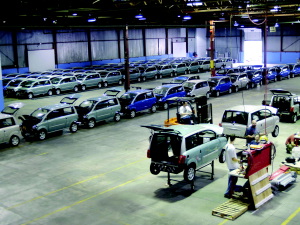
Electric Avenue
By Treena Hein
General Sustainability Automotive electric car sustainable designA revolutionary power storage technology is poised to help Toronto's ZENN Motor Company ride the crest of a new wave of electric vehicles.
“We have all the CAD data on the host vehicle. In general, that’s in CATIA,” Bergeron says. The majority of the mechanical work—mostly checking bracket stresses and battery packaging—is outsourced, under ZENN direction, to CADmech, a Toronto engineering firm with automotive expertise.
“As a small firm, we have to be flexible in terms of the OEM we work with,” he says. “It’s very difficult for us to have seats of CATIA and Pro/E and SolidWorks, etc., but CADmech has them all, and every one of their engineers knows at least two CAD platforms.”
All the electrical engineering is done by the company’s engineering team using VeSys software, which Bergeron says allows one engineer to perform the work of three. In many cases, he says their level of engineering documentation exceeds that of the host vehicle from the electrical side.
“[Using VeSys,] you can create the vehicle schematics as well as the harness drawings and it links everything together … and then we can actually simulate it online,” he says. VeSys also allows the team to examine failure modes and generate various fault positions in order to do trouble-shooting from a servicing perspective.
 Zenn Motors’ St. Jerome, Que. manufacturing plant near Montreal.
Zenn Motors’ St. Jerome, Que. manufacturing plant near Montreal.Most of ZENN’s engineering testing is done at their St. Jerome, Que., manufacturing plant. “We were able to get an agreement with the town of St. Jerome and the Quebec Provincial Police to allow us to drive our vehicles and to test them [in town],” he says. “I can’t tell you how important that was.”
A New Automotive Engineering Ball Game
Designing EV’s obviously differs from traditional automotive engineering. The gearless transmission, for example, is “radically simplified,” Bergeron says. “As an example, you could have a fixed gear ratio differential of let’s say 7:1 or 5:1; you just hook your motor up to that, and basically you have a gas pedal.” The motor speed is dependent on the frequency generated in the system. “Essentially, for an AC drive [currently used in ZENN cars], the controller is what we call an inverter,” he says. “An inverter basically takes in a DC voltage so you can connect a battery or a capacitor or whatever to the input and it creates an AC sine wave of differing frequency … the faster the frequency, the faster the motor turns.”
